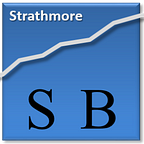A Simple Simple Simple Way to Compare Loans (Yes, It Is That Simple)
Determine which of two loans is cheaper using our new loan comparison tool.
As an entrepreneur taking out a loan is inevitable at some point. Initially it may be a soft loan from the 3 Fs (family, friends and other fools). As you grow and scale, it will eventually be from a bank or (hopefully) serious, international financiers. Being able to compare the options before you will increasingly get more critical and every percentage point will count.
Imagine these two scenarios:
- Scenario One: Bank A offers you KES 10 million credit for ten years, paying KES 120,000 monthly.
- Scenario Two: Bank B offers you KES 5 million credit for five years, also paying KES 120,000 monthly.
From a cost of credit point of view, which of these is cheaper? By how much? Many times the official loan rate is not the actual rate you are paying due to added costs, deductions and differing calculation methods.
Introducing Loan Comparison Tool by ISBI
Calculating cost of credit is neither intuitive nor the most exciting activity that you as an entrepreneur can carry out. But it is necessary.
Fortunately for you, we at ISBI have developed a simple and easy way for you to compare loan options that you may be considering. The Loan Comparison Tool by ISBI enables you to input the details of two loans, hit ‘Compare’ and instantly see which loan is cheaper and by how much.
In the case of the two sample loans above, these are the results you would get:
From this we can easily see that Scenario Two is more than two times more expensive.
Note: When using the tool, the principal amount you enter should be the NET amount to receive, i.e. the funds that you actually receive net any deductions. Very often a credit of KES 10 million in reality means you receive KES 9,900,000 net and, for instance, KES 100,000 is withheld as administrative fee. In this case, you should input KES 9,900,000.
The comparison explained.
In both cases, the instalments include interest payment and repayment of part of the principal. In the beginning, the interest portion is big and principal repayment very small. This changes gradually, so that closer to the end the situation reverses — the interest portion is small and the principal repayment big.
Scenario One is offering you double the money for double the period. This means that the ‘favour’ from the bank for Scenario One is four times the ‘favour’ from the bank for Scenario Two.
In both cases we pay the same monthly amount except that in case A we pay it for twice the amount of time which means that in case A we will pay double money. As the borrowed amount is exactly double, we can conclude that the paid interest is also double.
Therefore, bank A is going to charge you double, but the ‘favour’ they are providing you is four times bigger than bank B. This means that the credit offered by bank B is two times more expensive than the one offered by bank A.
ISBI strives to develop practical, locally applicable solutions for Kenyan entrepreneurs. All our programs are based on real life examples taken from our consulting practice in Kenya. Subscribe to us on the blog and on Twitter not to miss the next event.
